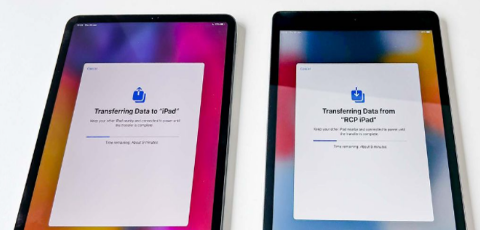We all love the convenience that digital subscriptions bring into our lives—streaming platforms, fitness apps, cloud storage, and more. It feels like we can access the world at our fingertips. But over time, these subscriptions start to add up.
Whether you're in Europe or the U.S., the cost of maintaining multiple subscriptions can become a substantial financial burden without us even realizing it.
Why Subscriptions Are So Appealing
There’s a reason subscriptions are everywhere. They offer convenience, a personalized experience, and access to a broad range of content and services. Rather than paying a large sum upfront, we get to break it down into smaller, more manageable monthly payments. But as these services continue to multiply, so do their cumulative costs.
People are signing up for streaming platforms like Netflix, Disney+, or Hulu to catch up on the latest shows and movies. For fitness, there’s Peloton or other workout apps. Then, there are music streaming platforms like Spotify and Apple Music. Each one feels like a small, reasonable cost on its own, but the total amount spent each month often goes unnoticed until it starts impacting your budget.
How Much People Are Spending on Subscriptions
The true cost of these services can vary depending on where you live. According to ExpressVPN’s recent study, Brits spend the most on digital subscriptions. Nearly 30% of respondents in the UK report spending between 21-40 GBP (roughly $26-52) per month on their digital subscriptions. That’s already a considerable amount, but a significant percentage of people also spend over £100 each month just to keep up with all their services.
In the U.S., 26% of respondents fall into a similar spending bracket, shelling out between $21-40 per month. The survey highlights how these costs quickly add up, especially when multiple subscriptions are combined. In other European countries like France and Germany, people spend anywhere between 11-40 EUR ($12-44 USD) each month, but the figures are rising, especially as more premium services enter the market.
Why Costs Are So Hard to Track
One of the reasons why subscription costs tend to sneak up on people is that they are automatically deducted. When a subscription fee is taken out of your account every month, it’s easy to forget it’s even happening. And let’s not forget the annual subscriptions—services you sign up for once but only get charged for the following year, which often comes as a surprise.
This “out of sight, out of mind” nature of subscriptions can make it hard to keep track of how much you’re actually spending. Combine that with multiple services charging different amounts at different times, and managing your finances can become overwhelming. As more services opt for freemium models with “hidden” premium options, it can be difficult to track exactly where your money is going.
The Cost vs. Convenience Dilemma
A big reason people stick with their subscriptions is the convenience they provide. It’s hard to deny how much easier life becomes when you can stream a movie, order food, or join a workout class from the comfort of your home. But at what point does convenience become a financial burden?
49% of people say their subscriptions are becoming too expensive. Despite this, many find it hard to cancel because of the convenience and value these services add to their daily routines. Subscription services have mastered the art of making their services feel necessary, even when the costs pile up.
How People Prefer to Pay for Subscriptions
People prefer to manage their subscription payments. 66% favor paying monthly, as it’s easier to fit into a regular budget. It spreads out the cost rather than asking for a large, upfront sum. Only 10% prefer to pay for lifetime access upfront, mainly because the initial commitment is much larger. However, there is still a segment of people who would rather make annual or quarterly payments to avoid constant monthly reminders.
Interestingly, when given a choice between free services with ads or a paid, uninterrupted experience, 60% of people prefer paying to avoid ads, even if it means an additional monthly expense. This reflects how much we value a smooth, distraction-free experience, further contributing to rising subscription costs.
The Impact of Subscription Overload
Managing multiple subscriptions doesn’t just affect your bank account—it also takes a toll on your mental load. 37% of people say they have a hard time keeping track of all their subscriptions, and 35% report that they don’t even have enough time to use all the services they’re paying for. This is the essence of subscription fatigue—the feeling of being overwhelmed by the number of services you manage without getting enough use out of them.
To make matters worse, 20% of people reported that they are frustrated by overlapping content across different services. For example, a movie available on one streaming platform might also be offered on another, making it difficult to justify paying for both.
How to Take Control of Your Subscriptions
If you’re feeling overwhelmed by the rising costs of subscriptions, you’re not alone. The key to avoiding subscription overload is to regularly evaluate your services and decide which ones you truly need. Start by listing all the subscriptions you’re paying for—both monthly and annually—and ask yourself whether they’re worth keeping.
For those looking to streamline streaming services, there are several options available in the UK. You can find an overview of the best streaming services in this guide by Radio Times.
Services like Rocket Money can help you track your spending, alert you when a subscription renews, and even assist in canceling unwanted services. Opting for bundled services like Amazon Prime, which offers a combination of shipping, streaming, and reading services, can help consolidate multiple subscriptions into one, saving both money and mental energy.
Final Thoughts
The costs of digital subscriptions across Europe and the U.S. are growing, and many people are struggling to manage the financial and mental load they bring. As the convenience of these services continues to be appealing, it’s important to keep an eye on how much they’re impacting your budget. Regularly reviewing your subscriptions and taking action when needed can help prevent costs from getting out of control.
If you find yourself in a similar situation, take the time to streamline your subscriptions and ensure you're only paying for what truly adds value to your life.

掌握运动追踪:循序渐进的视频指南
最先进的视频编辑器包括视频运动跟踪,这是一个方便的工具。顾名思义,它可以让您跟踪内容中的任何移动项目。为了使其更具吸引力,您可以添加文本、照片、贴纸和其他元素。例如,它可以制作隐藏面部的模糊效果或指示位置的标签。

提高软件质量:项目成功的最佳 QA 实践
质量保证 (QA) 是软件开发生命周期中不可或缺的一部分,是决定任何项目成功的关键。其主要作用是确保产品符合设计规范和用户要求,并提供无缝且无错误的用户体验。

如何检查 iPhone 的 EID:简单指南
在当今的数字世界中,了解 iPhone 的 eSIM 及其唯一标识符EID (嵌入式身份证件)非常有帮助。本指南简化了技术术语,并提供了一种简单的两步方法来查找您的EID ,使每个人都可以使用。

无需 iCloud 即可将数据从旧 iPad 传输到新 iPad 的 3 种最佳方法
想知道如何将数据从旧 iPad 传输到新 iPad吗?Apple 已宣布将于 5 月 7 日太平洋时间上午 7 点(东部时间上午 10 点)举行特别活动,届时他们将发布新款 iPad Pro 和 iPad Air 机型。一些用户很兴奋,但也好奇如何在不使用 iCloud 的情况下将旧 iPad 传输到新 iPad。
他们可能更喜欢通过有线连接进行更快、更可控的传输,尤其是当要传输的数据太多时。而 iCloud 的速度较慢且免费存储空间有限(仅 5GB),可能无法满足每个人的数据需求。
因此,我们有三种方法可以将 iPad 传输到新 iPad,无论是否使用 iCloud。此外,我们还分享了一些将 Procreate 文件传输到新 iPad 的额外技巧。






















